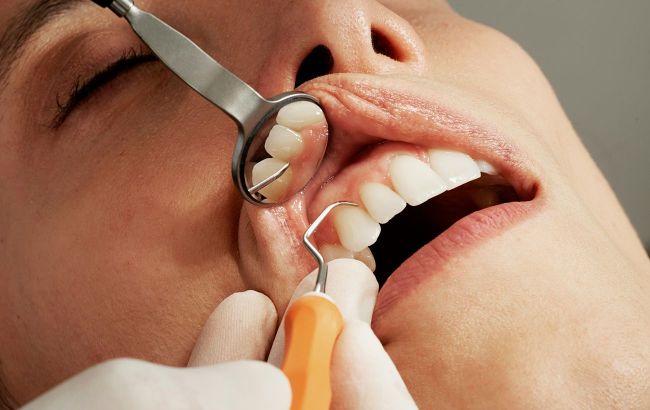How teeth deteriorate with age: Truth few talk about
 How human teeth change with age (photo: Unsplash)
How human teeth change with age (photo: Unsplash)
As we age, teeth undergo natural changes — they wear down, darken, and become more brittle. However, most of the problems can be corrected, and even stopped, reports The Mirror.
Teeth become darker
Dentist Dr. Zaeem Jafri explained that teeth are white at first because they are covered with enamel, a layer of semi-translucent calcified material that is 1.5 to 3 mm thick, and is the hardest substance in the body. Over time, this enamel darkens as it absorbs stains from pigmented foods and drinks such as red wine, tea, coffee, and nicotine.
As the enamel becomes more transparent, the yellow-brown dentin underneath becomes more visible.
To fix this, you can see a dentist for whitening.
Teeth get shorter with age
The average length of a front tooth is about 10–12 mm. Wear from biting and chewing means you may lose between 0.2 mm and 1 mm of tooth length every decade after age 20. This means your teeth will no longer have the rectangular shape they did in your teens, and your front incisors, in particular, may appear shorter.
To restore tooth length, veneers can be used. This involves shaving the front surface of the natural teeth and attaching a new surface with the ideal tooth shape.
Veneers need to be replaced approximately every 10–15 years, depending on wear.
Gum issues
Healthy pink gums are a key indicator of good oral health. But over time, they can recede due to gum disease. This happens when plaque, formed from food, bacteria, and saliva, builds up around the gum line.
This irritates the gums, leading to inflammation and recession. You can also wear away the gum line if you brush too hard.
The dentist explained that in people who experience gum recession due to improper brushing, the gums can recede by about 2 mm over ten years. This erosion at the gum line also exposes the yellow coloring of the tooth roots, making them appear less bright.
It's worth using a softer toothbrush and spending more time making gentle circular motions. Consider using a rotating electric toothbrush with a timer and pressure sensor, so it does the hard work and adjusts to what’s best for your teeth.
Teeth get more crowded
As we get older, teeth begin to shift due to the loss of bone mass in the lower jaw and years of chewing. This gradual movement toward the center of the mouth is called mesial drift.
This is because gravity, combined with the loss of connective collagen in the skin of the lower face, causes your philtrum—the space between the nostrils and the upper lip—to lengthen. Your lips will also drop by a few millimeters as your face elongates. Because of this, your upper teeth become less visible, and your lower teeth more visible.
One way to counteract mesial drift is to get braces.
Teeth grinding
Grinding in your sleep, also known as bruxism, can wear down teeth. This can lead to a loss of up to 2 mm of tooth over a decade.
If you grind your teeth, look for ways to reduce stress before bedtime. A night guard made by your dentist can protect your teeth while you sleep. Botox injections can relax the jaw muscles to help break the grinding cycle.
This material is for informational purposes only and should not be used for medical diagnosis or self-treatment. Our goal is to provide readers with accurate information about symptoms, causes, and methods of detecting diseases. RBС-Ukraine is not responsible for any diagnoses that readers may make based on materials from the resource. We do not recommend self-treatment and advise consulting a doctor in case of any health concerns.

